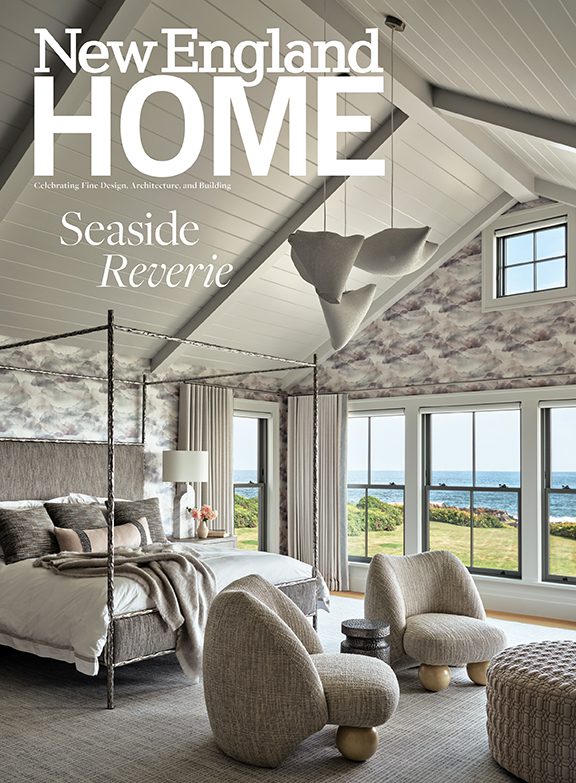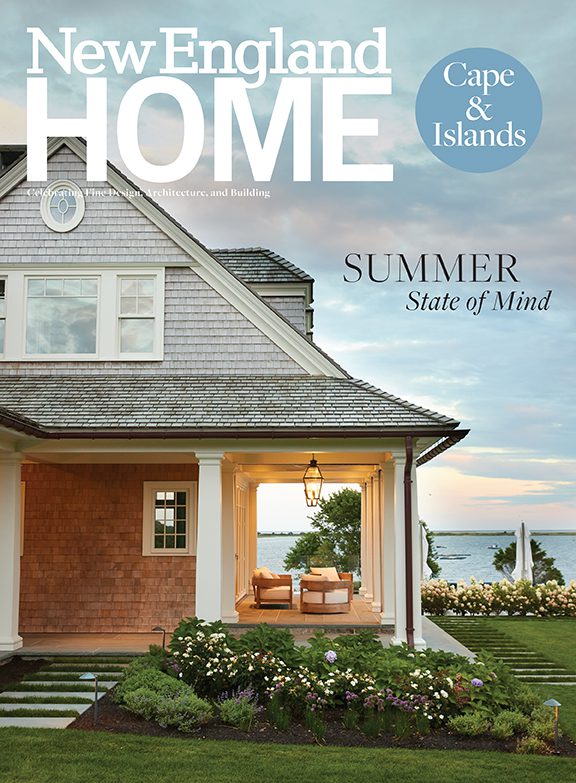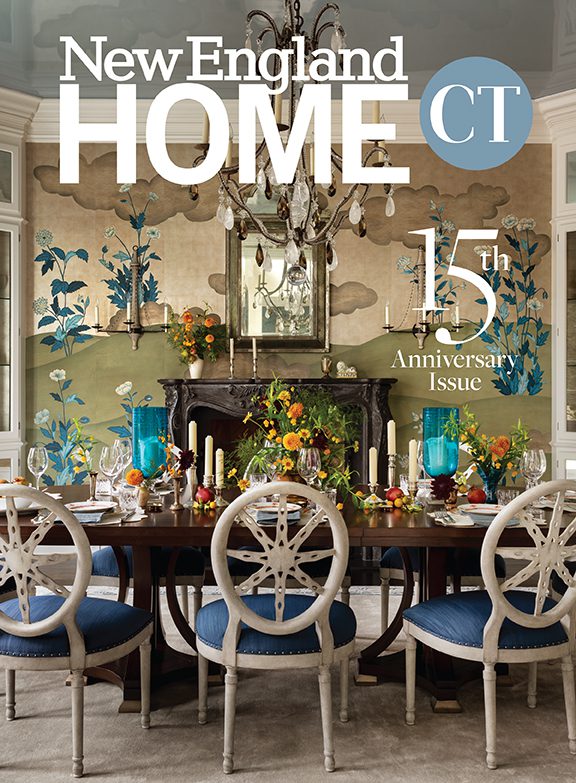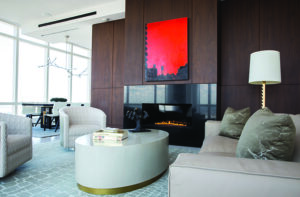Among Friends
October 27, 2015
Thanks to neighbors past and present, a Greenwich family finds itself living in the house of its dreams. Now that’s social networking.
Text by Lisa E. Harrison Photography by Jonathan Wallen
Living next door to good neighbors can come with some great perks. Sometimes it’s instant gratification; other times the payoff comes decades later. Just ask the homeowner who grew up riding her bike past the renowned architect Dinyar Wadia’s New Canaan home. She got to know Wadia and his wife, Gool, as a ten-year-old girl. She remembers playing with her friends out in front of the Wadias’ house, being invited in for homemade Indian food, and touring Dinyar’s design studio filled with drawings of his work. “My dream was to have a house designed by him,” she says.
Fast forward some thirty years and that little girl is grown up and living with her husband and children in a small cape in Greenwich. Neighbors approach her with the news that they are selling their house; does she want to see it before it’s listed? The house sits on a one-acre parcel in Greenwich’s coveted Belle Haven, an exclusive coastal community with 112 homes and a private club. She calls on Dinyar Wadia for his opinion. His verdict is swift: get a contract and sign it right away.
It’s a big win that can be chalked up to neighbor privileges: current neighbors give her and her husband the early heads-up, and a former neighbor signs on to help the couple make their new home just right for their family.
Discussions with Wadia eventually led to the decision to tear down the existing 1960s contemporary structure and start anew. But not to build something that looks new. “Dinyar said to me, ‘I’ll design you a house that looks like it’s always been there,’” remembers the wife.
Wadia drew up plans for a white clapboard Colonial Revival house with a Dutch gable roof with a series of dormers to add a sense of grandeur. The aim was a house that would fit seamlessly with the more traditional aesthetic of the neighborhood, but that would also have a modern feel suitable for a young family. Preserving the beautiful sandstone walls that border the house lent a welcome sense of history to the landscape.
Wadia worked hard to maximize the buildable area for the family of six. “The client gives you the program—what they want, what they don’t want,” he says, “and the site tells you from a zoning point of view what you can and can’t do.” In this case, they used every square foot zoning would allow. In order to do so, plans called for the garage to be located under the house, essentially in the basement—a clever solution that not only saves space, but also gives the house a symmetry that provides serious curb appeal.
This space-saving strategy translates indoors as well, where Wadia designed the house on a grid consisting of nine squares on each of the two floors. “It’s a nice condensed, well-thought-out plan that works,” says the architect.
The layout essentially mimics that of an English country house, so there are no hallways. “When you’re in one room, you’re always looking into another room, which makes the house feel bigger,” notes Wadia. There are also no doorknobs downstairs, says the husband. The only door, other than on the powder rooms, is a pocket door between the billiard room/study and the living room.
An open floor plan was, in fact, a directive from the owners. “We wanted it to feel like a family home, and we like to entertain,” says the wife. Guests enter into a foyer, which takes up two of the middle squares on that floor. The living and dining rooms flank the foyer to the left and right, respectively. From the living room, the rooms make a clockwise progression to the study, the family room, the kitchen, a mudroom that opens to a side entrance, and then finally the dining room. Taking into consideration lifestyle (with four kids who now range in age from eleven to fifteen, the house is often teeming with friends), the family room was extended over two squares along the back of the house; a patio, also conducive to entertaining, opens off the family room. To maximize light throughout the day, Wadia placed the living room, family room, dining room, and kitchen in the four corners of the house.
Upstairs follows the same grid. Each of the five bedrooms has its own bath, and the master suite, which sits above the family room, has a private porch that overlooks the backyard.
When it came to decorating, the wife, who studied interior design at Parsons School of Design, took the lead. Her process was deliberate. “We went room by room, so it took awhile,” she says. The core of the house, she explains, is neutral, with sea-grass wallpaper, sisal carpeting, and window treatments in soft earth tones. But she didn’t shy away from color, either, using it judiciously to add warmth. The billiard-room ceiling is painted burnt orange to coordinate with the top of the pool table, for instance, while the breakfast room ceiling has a fun lime-green wallpaper treatment. In the family room, accent pillows with shots of purple and red perk up the neutral sofas.
In keeping with the timeless exterior, all
of the fixtures are classic. “If I lived here for fifty years, I would never have to change those,” explains the wife. The wallpaper, paint colors, and kids’ rooms, on the other hand, can be altered as trends evolve. The house itself will never go out of vogue.
There’s comfort in the classics, and the end result is a house that the owners are extremely happy with. Working with Wadia was exactly as the wife had hoped. “Everything
he did,” she says, “was 100 percent correct.”
As a bonus, there are many new neighbors that the family can now get to know. If the past is any indicator, those relationships may lead to some interesting opportunities down the road. After all, it pays to be a good neighbor, and, says the wife with a laugh, “I’m a very nice neighbor.” •
Architect and builder: Wadia Associates
Share
![NEH-Logo_Black[1] NEH-Logo_Black[1]](https://b2915716.smushcdn.com/2915716/wp-content/uploads/2022/08/NEH-Logo_Black1-300x162.jpg?lossy=1&strip=1&webp=1)

















You must be logged in to post a comment.